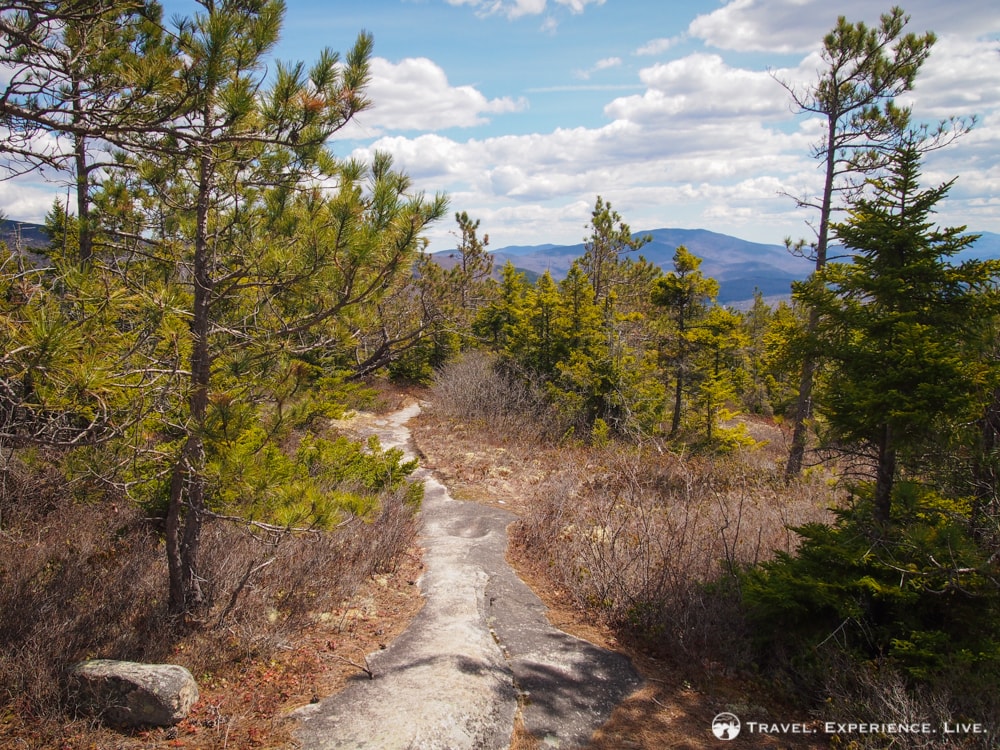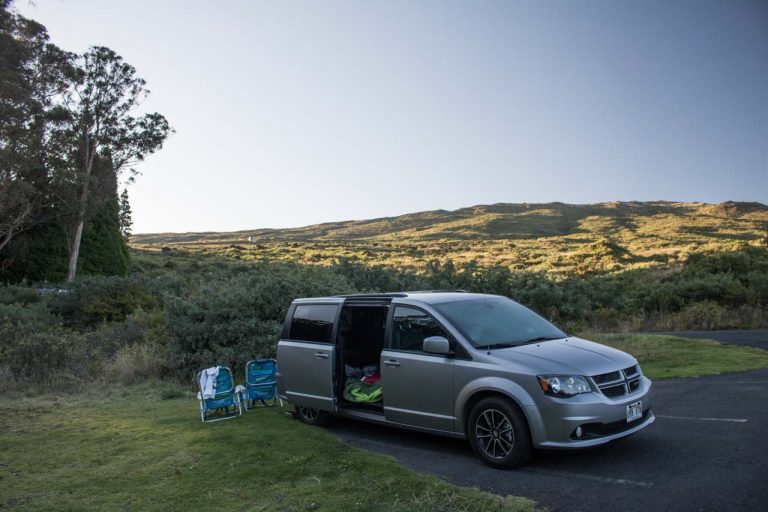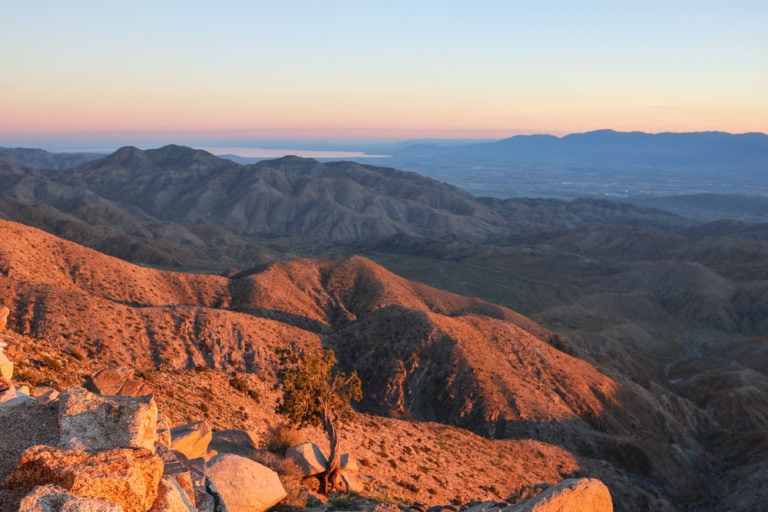What To Do When Encountering a Black Bear While Hiking
As exciting and unforgettable as a black bear encounter or sighting in the wild may be, it is also a potentially frightening experience.
It is important to remember that we share our state, provincial and national parks with other creatures, some of which can be dangerous. The best examples of those are mountain lions, grizzly bears and black bears.
So, whenever you head into bear country, you must know what to do when encountering a black bear while hiking. I also recommend taking a basic first-aid kit with you on hiking and/or camping trips.
Black Bear Safety While Hiking: What To Do & How To Behave
This post about what to do during a black bear encounter contains affiliate links. You can read more about our Terms of Use / Disclosure here.
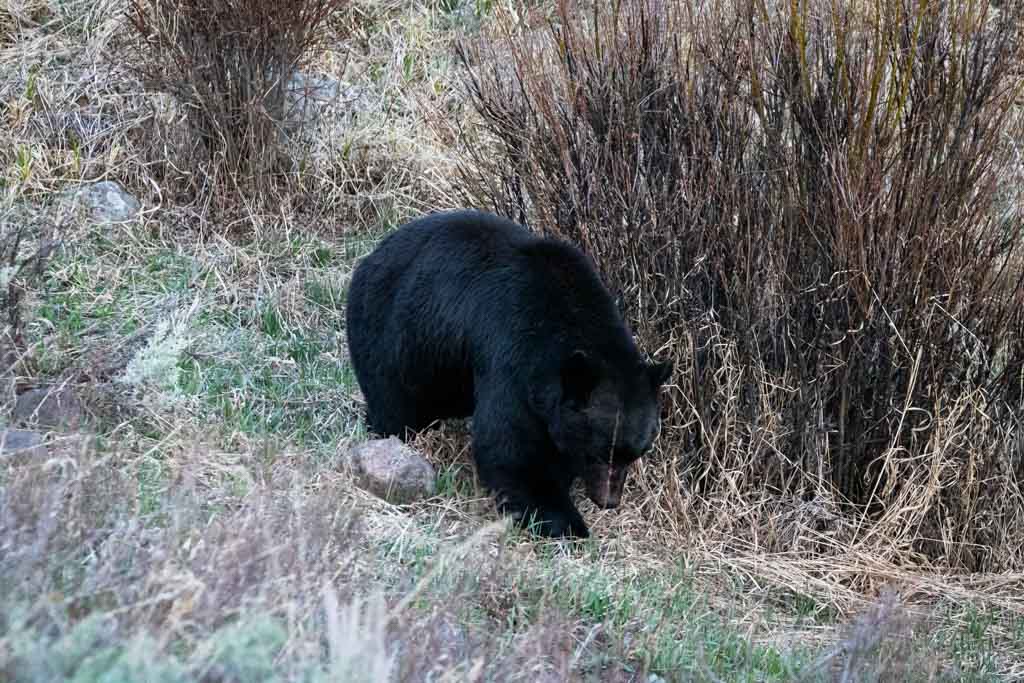
How To Avoid a Black Bear Encounter
The first step, as in many situations, is prevention. There are a few things you can do to avoid a black bear encounter. There’s no better way to prevent an unpleasant encounter with a black bear than avoiding the animals altogether.
Bears usually avoid humans, too, often leaving the scene even before a person realizes a bear was around. You may have been close to a black bear in the wild without even knowing it yourself.
Most black bear attacks happen when a bear gets surprised. And those attacks are always defensive. Therefore, always make sure to make noise while hiking.
Talk, whistle, sing, clap your hands regularly. Be noticeable and loud, especially when hiking near streams, through an area with low visibility or with a food source for bears, such as berries. Never hike with earphones and pay attention to your surroundings.
Try not to hike through black bear country alone and silently. Hiking in groups is always better—you’ll be both louder and more imposing to bears.
- Make noise
- Pay attention to your surroundings
- Hike in group and stay together
- Keep pets on a leash at all times
- Hike on marked trails and during the daytime
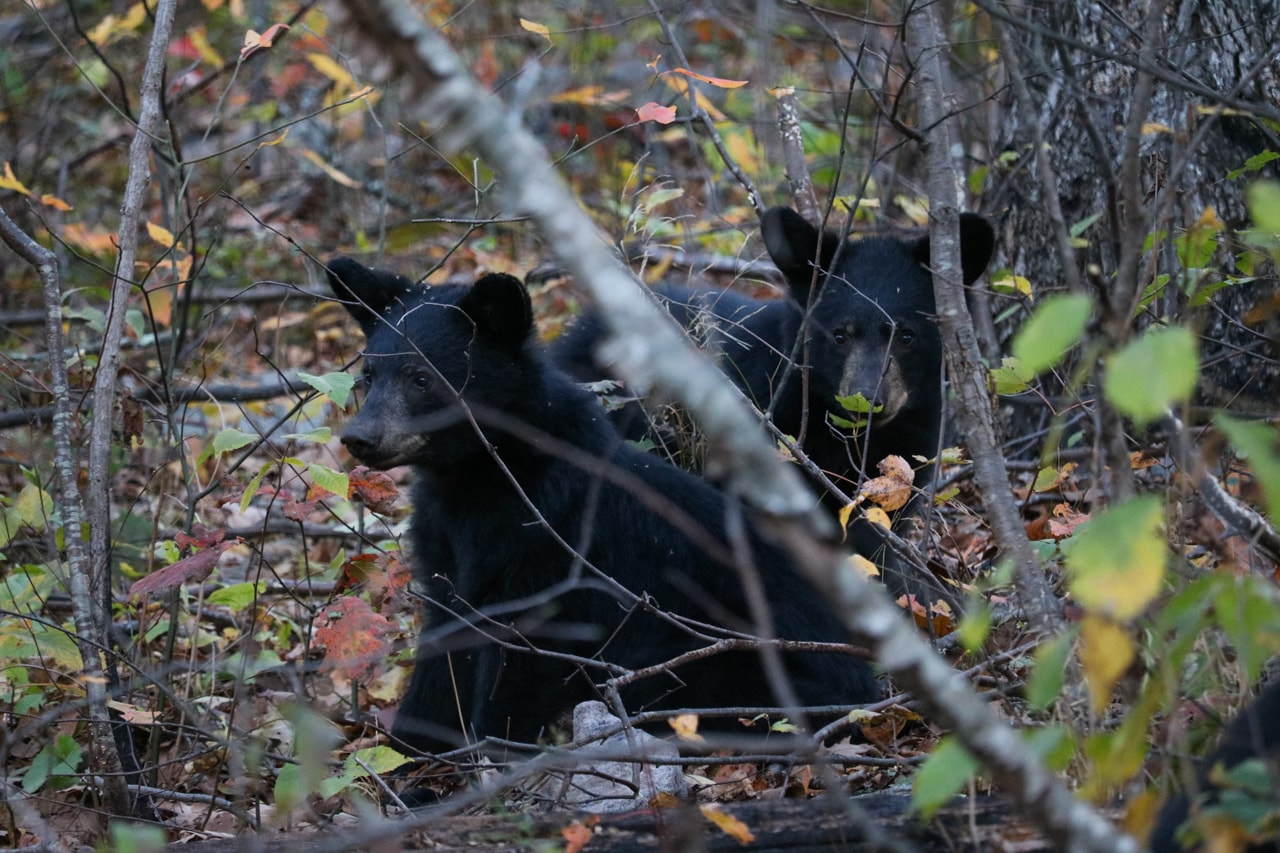
Book Recommendation:
Backcountry Bear Basics: The Definitive Guide to Avoiding Unpleasant Encounters
Black Bear or Grizzly Bear?
What to do when encountering a bear while hiking depends entirely on which species of bear it is.
Both species behave and respond differently when encountering people. It is, therefore, critical to be able to determine what kind of bear you’re dealing with.
So, what is the difference between black bears and grizzly bears?
Black Bears
The American black bear lives all over the United States and Canada. It is the smallest of the three bear species found in North America—the polar bear is number three and by far the largest. Extremely adaptable, they’re present all over the country, in at least 40 states.
You can recognize a black bear by its straight face profile, large protruding ears, small claws and lack of shoulder hump. The rump of black bears is higher than their front shoulders.
Although they’re called “black”, black bears can also be dark brown, brown, blue-ish black and cinnamon.
Grizzly Bears
A subspecies of the brown bear, grizzly bears are some of the most-feared animals in America. This is, of course, unjustified.
Yes, they may be huge and imposing, powerful enough to cause major injuries to any other animal, but they can also be gentle and curious.
Grizzly bears are, on average, much larger than black bears. Their most prominent body features are their clearly visible shoulder hump and large claws. Additionally, grizzly bears have short, rounded ears and a so-called “dished” face profile with a nose that somewhat sticks out from their face.
While they used to live all over North America, their range is now limited to the northwestern part of the continent.
In the U.S., the healthiest grizzly population is in Alaska. In the lower 48 states, about 1,500 grizzlies survive, most of which in the wildernesses of Montana and Wyoming, arguably the best places for wildlife watching in America.
Idaho also has a significant grizzly bear population, while Washington’s North Cascades are home to only a handful.
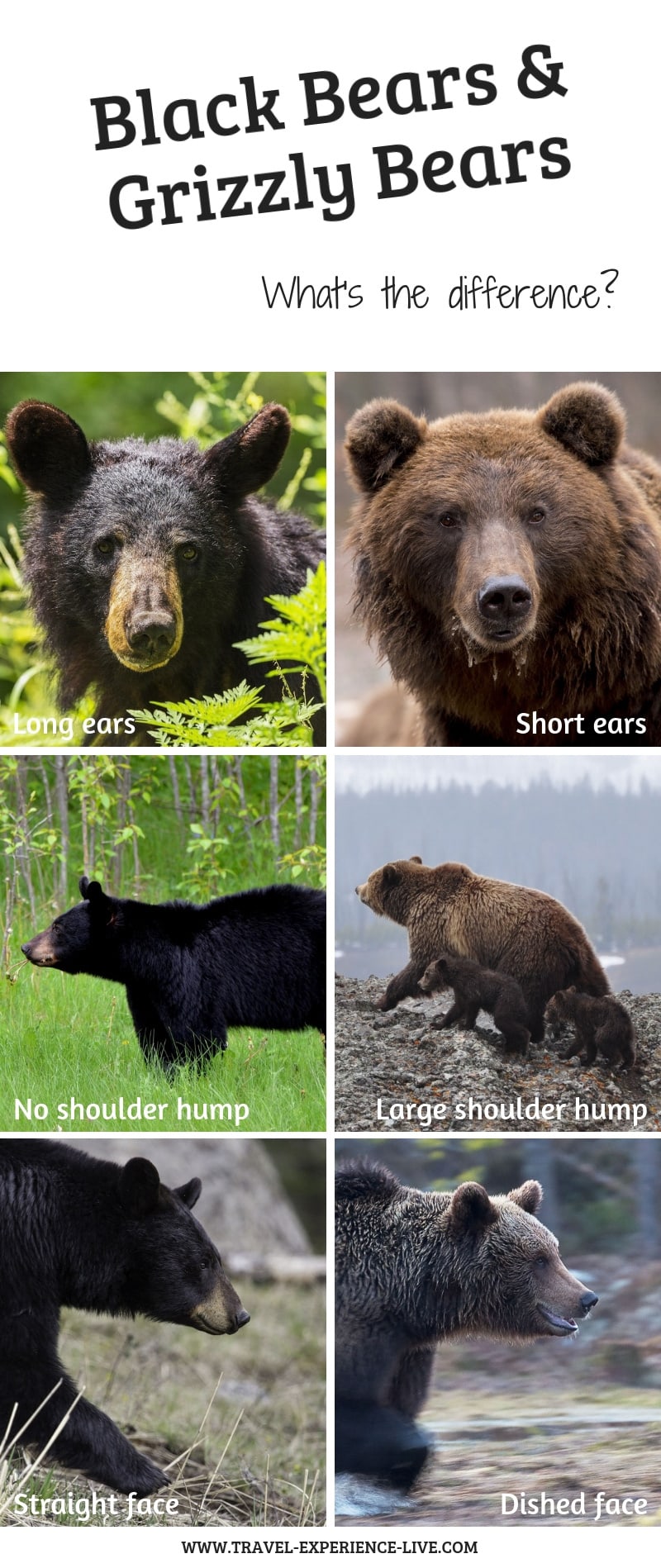
What To Do When Encountering a Black Bear
If you see a black bear on the trail or at your campsite, you should stop whatever you’re doing and assess the situation. Remember that the bear is probably more scared of and startled by you than vice versa.
Black bear attacks are extremely rare and, usually, you can scare off a black bear pretty easily.
Evaluate the bear’s body language. Is it just going about its business? Does it seem agitated? Is it curious? Does it seem to be following you?
Don’t be frightened if a bear stands up on its hind legs. It only wants to get a better overview of the situation. This is not an act of aggression.
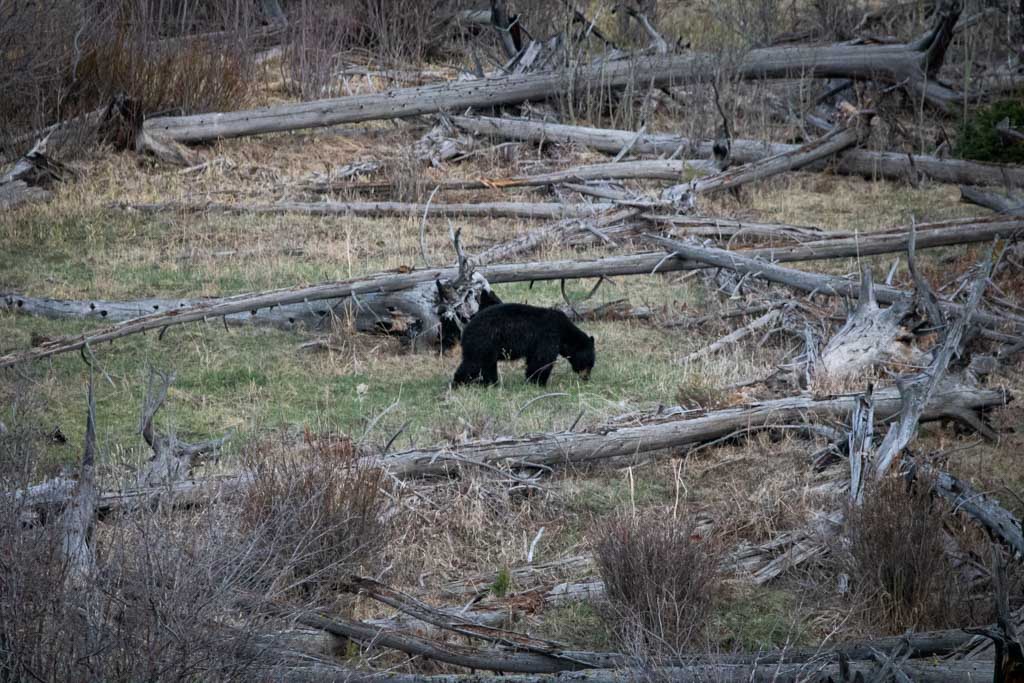
Defensive Black Bear Encounters
Usually, a surprise black bear encounter will trigger a defensive response in the bear. This is often nothing more than the bear running away from you as fast as possible.
Sometimes, however, the bear will pop its jaws, swat its front paws on the ground, and snort and blow. Black bears may also bluff charge you. Remember that these are all ways the bear is trying to tell you you’re too close.
Don’t be intimated and stand your ground. Never turn your back to a black bear and never, ever run away.
Unless cubs are involved, a defensive black bear almost never physically attacks a human. (The opposite is the case when it comes to grizzly bears.)
- When encountering a defensive black bear, face the bear directly and try to appear as large as possible.
- Spread or wave your arms, ideally holding a sweater or coat, and move to higher ground if you can. Don’t climb a tree. Black bears are excellent climbers.
- Pick up small children.
- Keep your backpack on, it may offer protection for your back in the extremely unlikely case of an attack.
- Talk to the bear in a calm, low and monotone voice. This allows you to keep your calm and does not appear threatening to the bear. This way, the animal can identify you as a human.
- Never scream or yell at a bear. Don’t make sudden movements. This may trigger an attack.
- Get your bear spray ready by removing the safety lock.
- If the bear does not approach you, back away slowly, preferably at an oblique angle. Bears consider sideways movements non-threatening.
- If the bear does approach or charge, use your bear spray. At a distance of at least 25 to 30 feet (8 to 10 meters), give it a full spray.
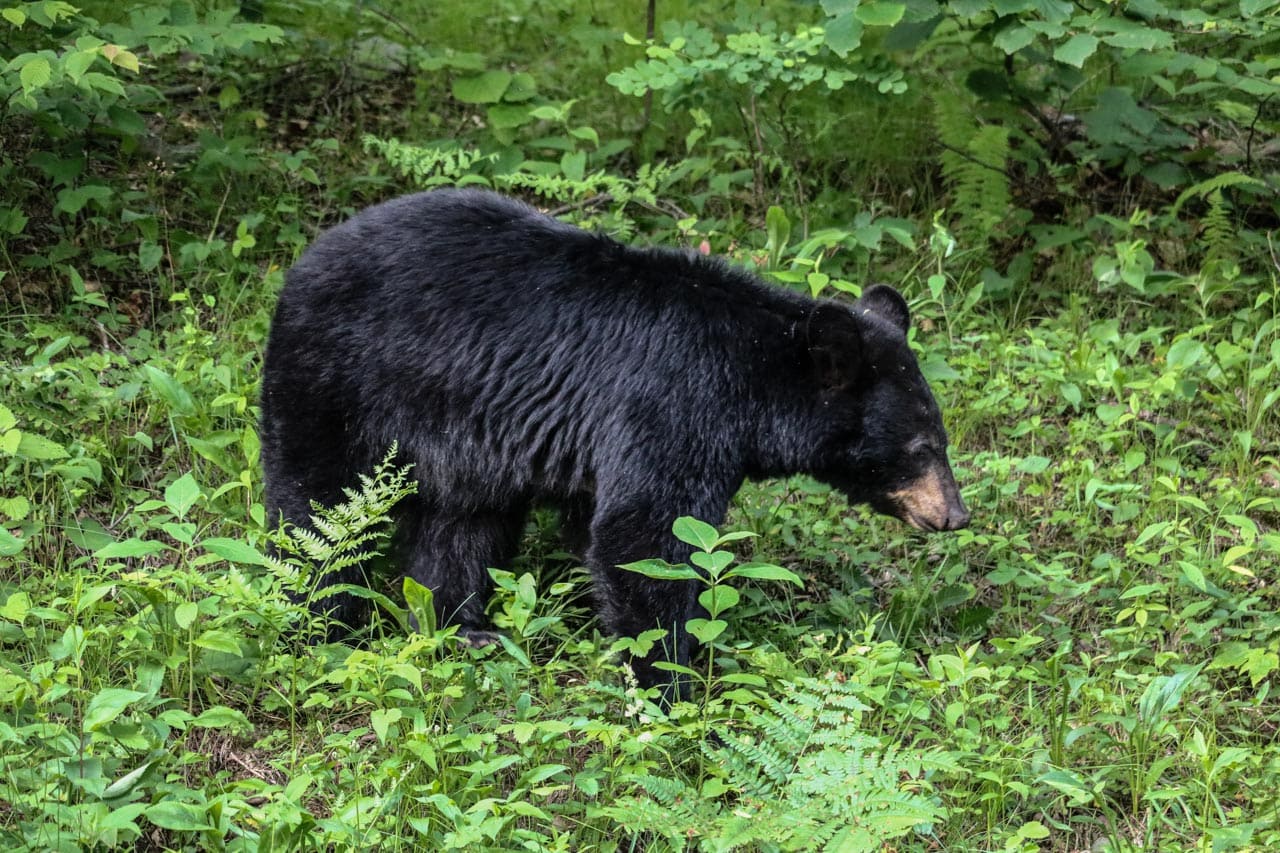
Aggressive Black Bear Encounters
In the very rare case a black bear encounter is of the aggressive kind, it’s time to go to battle.
- As rare as it may be, physical contact between black bears and humans is typically not defensive in nature, but predatory. If a black bear does attack you, fight back with all your might and strength. Use any object you can find to hit the bear in its face and nose.
- Do not play dead.
- Do NOT play dead!
- Remember, if you’re actually physically attacked by a black bear, you will have to fight for your life.
- Luckily, once a black bear realizes you’re putting up quite a bigger fight than it anticipated, it will most likely give up and you’ll be able to say that you won a fight against a wild bear.
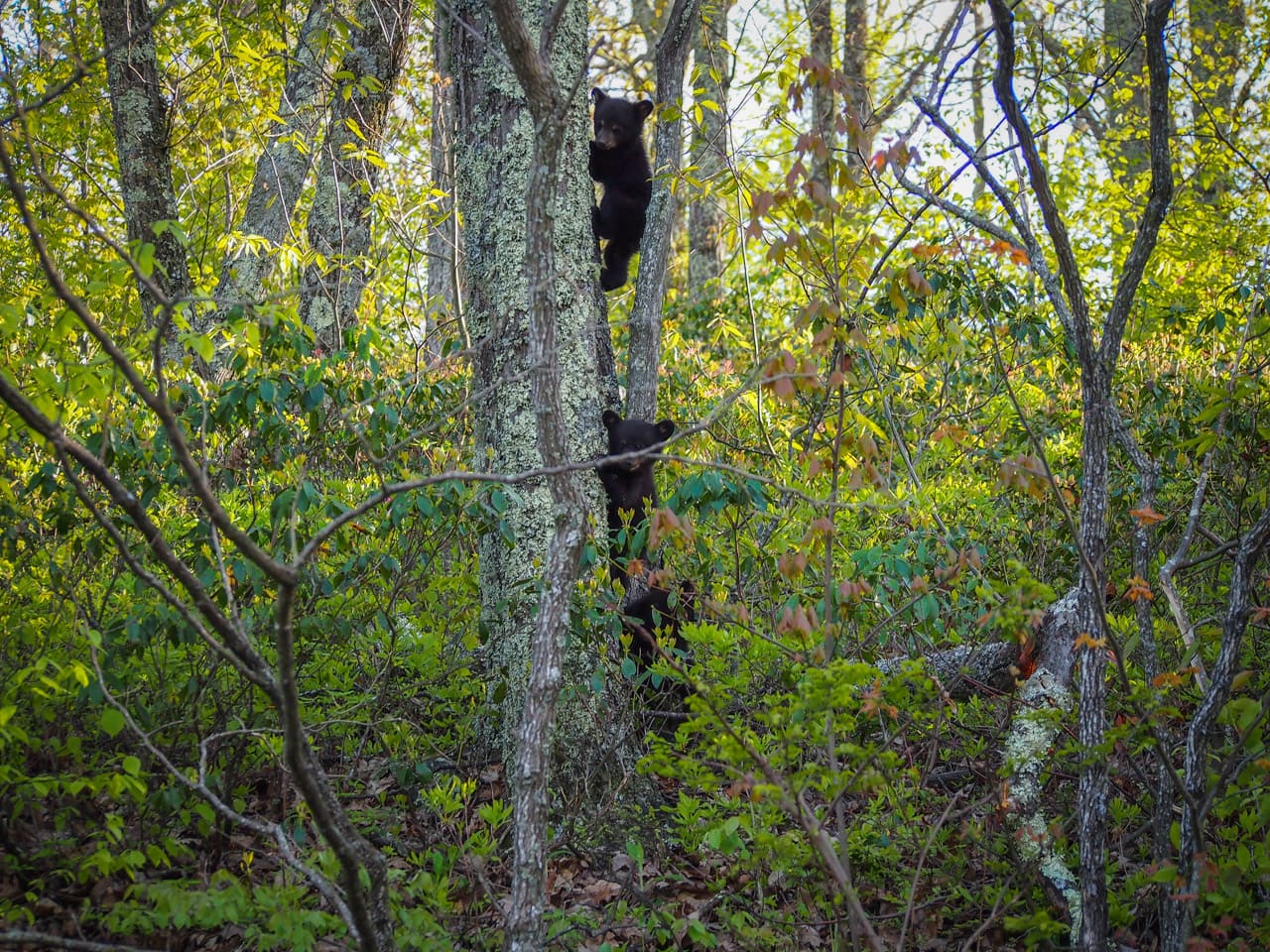
Bear Spray
Before anything else, your first line of defense during a black bear encounter should always be your bear spray.
Bear spray is by far the most successful way to stop aggressive bears.
Additionally, it’s non-lethal. Bear spray can reduce the number of bears killed in self-defense or after a physical attack, as well as human injuries. Using it is a classic win-win situation.
Good Practices
- Know how to use your bear spray before heading into the backcountry.
- Practice using your bear spray with an empty can. Practice grabbing it, removing the safety with your thumb and spraying.
- Keep it accessible in a quick-draw holster, not stored somewhere in your backpack.
- It’s not necessary to be able to aim perfectly. Putting up a screen of spray between you and the bear is often enough.
- Check the expiration date of your bear spray and make sure it’s EPA-approved.
- Never use bear spray like you would insect repellent. Do not spray it around your campsite before going to sleep. It does not work that way and might even attract wild animals to your site.
How to Use Bear Spray
When you’re trying to scare off a charging black bear, bear spray almost always does the trick. Make sure you know you to use it properly, though.
Bear attacks are split-second events, you should be able to use your spray on auto-pilot.
- Remove the safety tag.
- Aim at the bear’s face and keep in mind the direction of the wind.
- Spray when a curious bear is 25-30 feet (8-10 meters) away.
- In case of a charging bear, spray when it is 30-60 feet (10-20 meters) away.
- Continue spraying until the bear leaves or changes direction.
- Spray directly into its face in case a bear is about to physically attack you.
- Get out of the area as quickly as possible, without running.
Best Places to See Black Bears in the Wild
If, after all this, you’re a bit concerned about going hiking in black bear country, don’t be. This post is simply to prepare you, inform you about what to do when encountering a bear while hiking. A black bear sighting in the wild, there’s nothing like it.
While black bears live and can be spotted all over the U.S., there are some areas where the likelihood of seeing them is just that much higher.
Unsurprisingly, it’s America’s national parks where you need to be to have the best chances of seeing black bears in the wild.
See the absolute best national parks for black bear viewing in this blog post.
Where to See Black Bears
Some of the best national parks to see black bears include the following.
- Great Smoky Mountains National Park, North Carolina and Tennessee
- Shenandoah National Park, Virginia
- Yellowstone National Park, Wyoming
- Grand Teton National Park, Wyoming
- Glacier National Park, Montana
- Big Bend National Park, Texas
- Voyageurs National Park, Minnesota
- Sequoia National Park, California
- Olympic National Park, Washington
- Mount Rainier National Park, Washington
- …
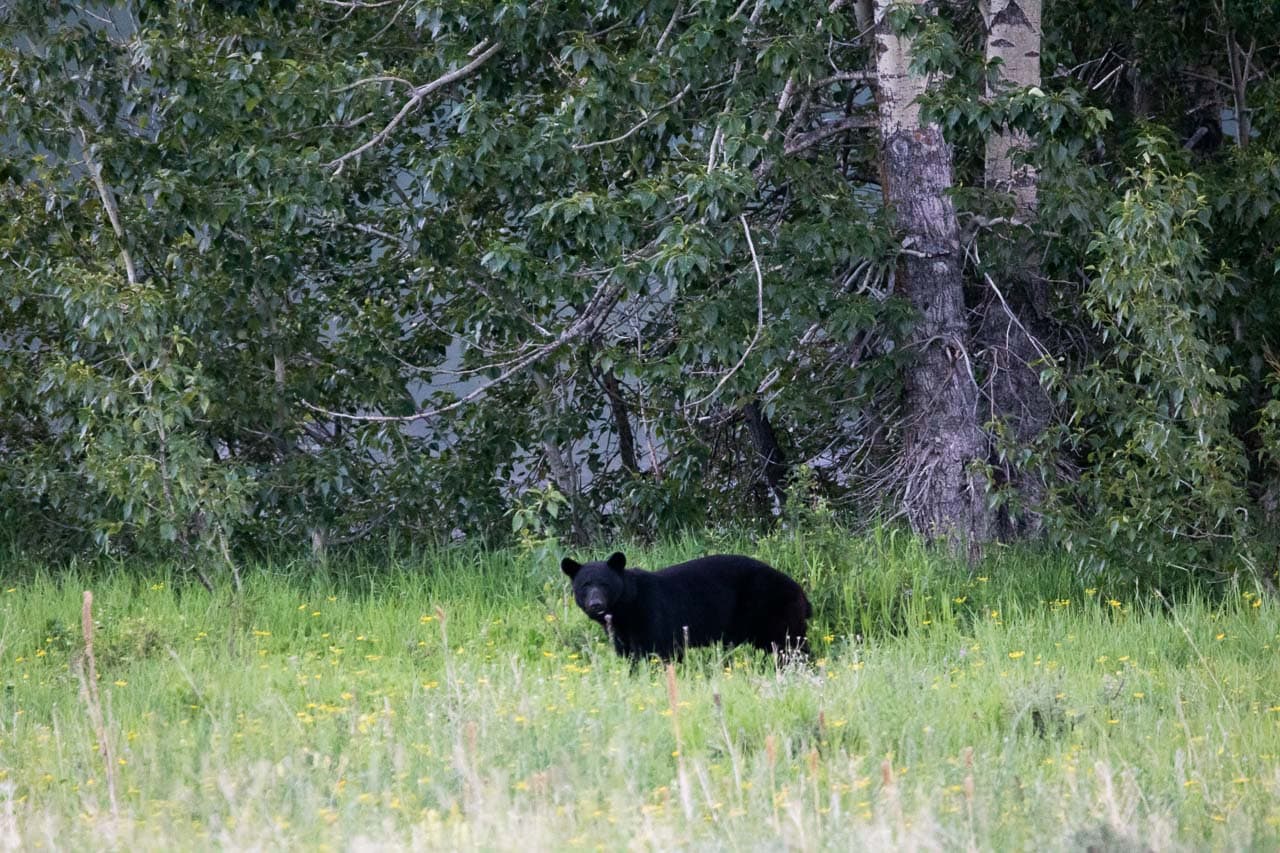
Hopefully, this elaborate post gave you a better understanding of how to behave during a black bear encounter. You now know what to do when encountering a black bear in the wild, so go out and immerse yourself in nature’s most awe-inspiring landscapes. That’s where the bears hang out, too!


